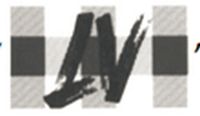As weird as it could sound, this is one of the arguments that a Manila-based business owner used to win an opposition moved by Louis Vuitton.
In December 2019, Victor Martin Soriano, a Philippines small business owner, filed a trademark application No. 4/2019/21600 for an "LV (device)" trademark logo before the IP Office of Philippines (IPOPHL). The class covered by the application was class 3, namely used for cosmetics product.

Specimen of the disputed trademark
Immediately after that, Louis Vuitton Malletier, well known as luxury fashion brand, filed his opposition against the application arguing that, as a result of opposer's extensive and continuous use of the 'LV' logo for over a century, the general public, not just in France but worldwide, including the Philippines, now easily associates the mark with opposer and its products.
Louis Vuitton, as opposer, raised the ground of the confusing similarity of the challenged mark with its registered mark, relying on Sections 123.1 (d) and (f) of the IP Code. The same provides: Section 123. Registrability. - 123.1.
"A mark cannot be registered if it: xxx (d) Is identical with a registered mark belonging to a different proprietor or a mark with an earlier filing or priority date, in respect of: (i) The same goods or services, or (ii) Closely related goods or services, or (iii) If it nearly resembles such a mark as to be likely to deceive or cause confusion;"
The Philippine applicant response did not take long. In particular, Soriano reply first, that there is no confusing similarity between the marks and the goods, that the Opposer did not own the alphabet, that there are numerous establishments and words using "LV", and that the letters "LV" was coined from his relatives' last name "Lopez-Vito" based in the United Kingdom, and the checkered background is of British-Filipino origin.
Secondly, in the reply it has been claimed that the risk of confusion was not existing, considering the difference of goods covered by the two applications: on one hand, clothes, and accessories; on the other, cosmetics indeed.
A not successfully attempt of negotiation followed the submission of the opposition therefore, the IPOPHL has been requested to rule.
With the decision published on 27 September, the IPOPHL ruled that – based on the "marked differences between the marks and goods" it is "highly unlikely for the public to be confused and misled by the products" of the two parties.
In addition to what reported, the IPOPHL also referred that the evidence "failed to sufficiently show that 'LV' has achieved such a level of notoriety to establish that it had become famous as to the consumers and the market in which its products are being offered to".
On one side, the IPOPHL recognized that the full brand name, 'Louis Vuitton', has been declared as well-known trademark. However, this recognition did not include all the French brands, among which, indeed, LV mark.
Moreover, sustaining Soriano, it claimed that, considering the difference between the goods sold by the two parties, the risk of consumers being deceived is "minimal, if not completely inexistent".
The opposition was therefore rejected.
Indeed, the IPOPHL ruled that it is stressed that "[t]he function of a trademark is to point out distinctly the origin or ownership of the goods to which it is affixed; to secure to him, who has been instrumental in bringing into the market a superior article of merchandise, the fruit of his industry and skill; to assure the public that they are procuring the genuine article; to prevent fraud and imposition; and to protect the manufacturer against substitution and sale of an inferior and different article as his product." Therefore, the Office affirmed that the mark of Respondent-Applicant sufficiently meets this function.
It is understood representatives for Louis Vuitton Mattelier are preparing an appeal.
The content of this article is intended to provide a general guide to the subject matter. Specialist advice should be sought about your specific circumstances.


